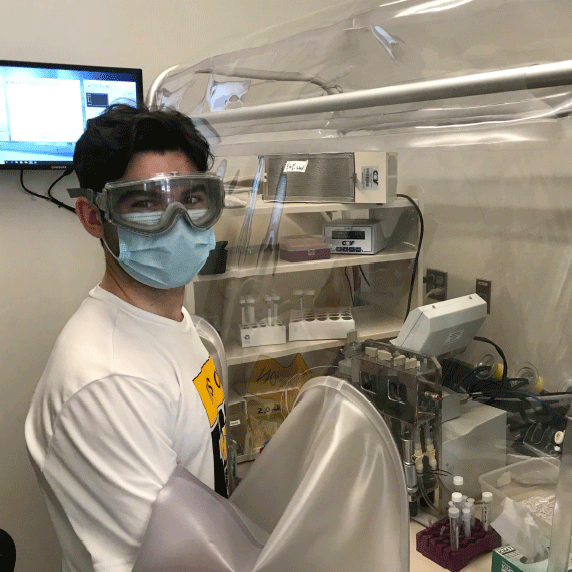
Characterization of Substrate Promiscuity for 6-Hydroxynicotinate 3-Monooxygenase

A Transient Kinetic Investigation of the Decarboxylative-Hydroxylation of 5-Cl-6-Hydroxynicotinic Acid
Name: Jack Redick
Major: Biochemistry & Molecular Biology
Advisors: Dr. Mark Snider, Dr. Paul Edmiston (second reader)
Abstract:
6-Hydroxynicotinate 3-monooxygenase (NicC) is a flavin dependent monooxygenase (FDM) that catalyzes a decarboxylative hydroxylation of 6-hydroxynicotinatic acid (6-HNA), an intermediate in the nicotinic acid catabolic pathway which is used as a model system for the study of N-HAC degradation. Understanding the kinetic basis of catalysis for this ipso reaction is important for the future bioengineering potential of NicC. NicC has been characterized structurally, mechanistically and kinetically with its natural substrate 6-HNA, and it has been suggested that NicC is a promiscuous enzyme that can catalyze the decarboxylative hydroxylation with a range of aromatic substrates. As such, study of the kinetics with an alternative substrate can provide insight into the biochemical mechanisms that allow for greater promiscuity. The transient kinetics of NicC with the alternative substrate 5-Cl-6-HNA was investigated by conducting single-turnover experiments in which dioxygen concentration was controlled. Each step in the action of the enzyme was measured using stopped-flow spectrophotometry and accompanying rate constants were elucidated by analytical fitting and simulation using KinTek Explorer. The kinetic mechanism of NicC has three segments. The first segment, involving the binding of 5-Cl-6-HNA (studied earlier), takes place via a rapid- equilibrium two-step binding model in which the substrate is ionized in the second step. The second segment, involving the reductive half reaction, follows a three-step model whereby a rapid equilibrium forms a charge transfer complex which subsequently reduces the flavin before the enzyme releases NAD. The final segment, involving the enzyme’s reaction with dioxygen, was also found to proceed by a three-step mechanism in which ring hydroxylation by electrophilic aromatic substitution takes place via the C(4a)-hydroperoxyflavin intermediate much faster with 5-Cl-6-HNA than with 6-HNA, where water release appears to be a rate-limiting step.
Posted in I.S. Symposium, Independent Study on April 29, 2021.
Related Posts
Related Areas of Study
Biochemistry & Molecular Biology
Biology and Chemistry combine in an interdisciplinary program for students with a passion for molecular events.
Major

